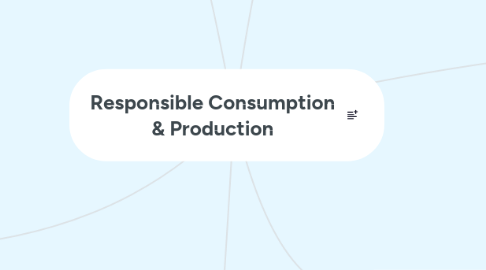
1. Electronic Wastes
1.1. Improper disposal of Old and Unused Electronics
1.1.1. Old Phones, Computers, Televisions, Radio boxes
1.1.1.1. Most are thrown at the rubbish chute below their houses
1.1.2. Digital E-waste recycling bins
1.1.2.1. Place their E-wastes in the bins,
1.1.2.1.1. There's a screen on the exterior of the bin to see what resources have been discarded by us
1.1.2.1.2. Temporarily store the E-waste safely without being a health hazard to surroundings
1.2. Main Goal: REPAIR / REUSE / DONATE / RECYCLE
1.2.1. Protect valuable and scarce resources from being discarded
1.2.1.1. Silver and Gold in electronics
1.2.1.2. Mobile App: Helps owners of electronic products to better know what resources exists in their electronics before donating e.g.
1.3. Harmful to the environment
1.3.1. Emits Carbon emissions
1.3.1.1. Contributor of Climate Change
1.3.2. hazardous to the environment and health
1.3.2.1. Disposing and incineration of heavy metals in E-wastes
2. Plastic Waste
2.1. Types of Plastic Waste
2.1.1. Single-use disposable packaging
2.1.2. Bottle & Container Caps
2.1.3. Plastic Bags
2.1.4. Straws and Stirrers
2.1.5. Beverage Bottles
2.1.6. Plastic Utensils
2.1.6.1. The Vast Majority Of Plastic Cutlery Can’t Be Recycled. Most plastic cutlery is made from a type of plastic known as polystyrene1.
2.1.6.2. Polystyrene or expanded polystyrene is more commonly referred to as Styrofoam. It is very difficult to recycle Styrofoam.
2.1.6.3. It Creates Waste. But solid waste isn’t the only thing that’s wasteful about plastic cutlery.
2.1.6.4. Plastic cutlery also takes energy and water to create
2.2. More than 90% of plastic is never recycled, and a whopping 8 million metric tons of plastic waste are dumped into the oceans annually.
2.3. The Caribbean Islands are the biggest plastic polluters per capita in the world.
2.4. Around 20,000 bottles are bought every second which leads to a colossal amount of plastic waste which ends up in the ocean.
2.5. How to reduce the use of plastic utensils ?
2.5.1. Crunch Cutlery
2.5.1.1. Instead of just having eco-friendly spoons, Crunch Cutlery makes edible spoons that are made of superfoods or packed with fruits.
2.5.1.2. You get to curb the problem of single-use plastics and get your nutrition boost from these spoons.
2.6. Why to use Crunch Cutlery instead ?
2.6.1. They are eco-friendly
2.6.2. They're functional
2.6.3. They're delicious
2.6.4. They're nutritious
3. Ways to solve the problem of this SDG
3.1. Substantially reduce waste generation
3.2. Responsible management of chemicals and waste
3.3. Halve global per capita food waste
3.4. Responsible management of chemicals and waste
3.5. Encourage companies to adopt sustainable practices and sustainability reporting
4. Solutions for reducing food waste
5. Food Waste
5.1. Avoidable food wastage
5.1.1. leftovers from a meal, expired food, stale food, and blemished fruits and vegetables
5.1.1.1. Leftover beer and soy grains
5.1.2. prevented by taking food wastage reduction actions such as buying, ordering and cooking only what is needed and adopting smart food storage and preparation practices
5.2. Overbuying of food
5.2.1. Disposed because of expiration or unconsumable
5.3. Leftovers
5.4. Unavoidable food wastage
5.4.1. parts/portions of food which were not intended for consumption, such as such as bones and egg shells
5.4.2. Unedible by-products of another food
5.4.2.1. Grain and soy hops
5.4.2.1.1. Insectta Singapore (How can it help?)
6. Carbon Dioxide Waste
6.1. Cars
6.1.1. Production factories that produce waste making vehicles
6.1.1.1. Burning of fuels like fossil fuels and diesel from vehicles.
6.1.1.1.1. Carbon emissions from fuels are one of the main causes of carbon dioxide waste.
6.1.1.1.2. It is estimated that 9 Gigatons of Carbon per year is approximately the same as 4 ppm per year in which carbon emissions from cars are the main causes.
6.1.1.1.3. With that, the main driving force would be production factories making these vehicles that allow carbon emissions to be put out by the cars being made.
6.2. Motorbikes
6.3. Humans Smoking
6.3.1. Cigarettes'
6.3.1.1. Burning of Tobacco
6.4. Electrical appliances
6.4.1. unused electrical parts
6.4.1.1. Burning of lead
6.4.1.2. Burning of metal
